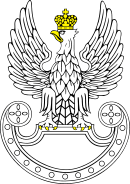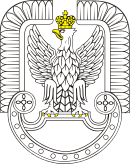Polish–Ottoman War (1620–21)
| ||||||||||||||||||||||||
The Polish-Ottoman War (1620–21) or First Polish-Ottoman War was a conflict between the Polish–Lithuanian Commonwealth and the Ottoman Empire over the control of Moldavia. It ended with the Commonwealth withdrawing its claims on Moldavia.[1]
Background
Traditionally, Moldavia had been a subject of the Kingdom of Poland, and later the Polish-Lithuanian Commonwealth. As the Ottoman influence grew in the 16th century, they had become more and more interested in the region. From the end of the 16th century and the beginning of the 17th century, the magnates of the Polish-Lithuanian Commonwealth intervened in the affairs of Moldavia, which the Ottoman Empire considered within its sphere of influence. Additionally, the Ottomans were aggravated by the constant raids of Cossacks, then nominally subjects of the Commonwealth, across the border into Ottoman territories. Another reason causing the war was the recent outbreak of the Thirty Years' War, and the request of support from the rebel leaders in Bohemia.
At the time, the Thirty Years' War was raging across Europe. Gabriel Bethlen, prince of Trasylvania saw an oppurtunity to unite the two hungarian principality, Transylvania and Royal Hungary, and sacked Vienna on november, 1619. He also asked Sultan Osman II for aid, but this was unsuccessful. The Commonwealth was relatively uninvolved in this war but the Polish king, Zygmunt III Waza, sent an elite and ruthless mercenary unit, the Lisowczycy, to aid his Habsburg allies. They defeated the Hungarian lord George Rákóczi at the Battle of Humenné in 1619, and thus, cutted the supply lines of Transylvanian forces. Then Gaspar Graziani, ruler of Moldavia, switched sides and joined Poland.
Thus, the sultan agreed to help Bethlen, gathering a large Ottoman army with the intent of a punitive invasion of the Commonwealth.
The war
In 1620, he crushed the Commonwealth army at the Battle of Ţuţora (Cecora). The campaign was suspended for the winter but, in 1621, both sides resumed hostilities.
In 1621, an army of 100,000–250,000 soldiers (sources vary), led by Osman II, advanced from Constantinople and Edirne in April, towards the Polish frontier. The Polish army had 8,280 hussars, 8,200 cossack style cavalry (light cavalry), 1,400 Lisowski cavalry, 2,160 western cavalry, 6,800 Polish infantry, 5,800 western infantry, 800 Hungarian infantry and 25,000 Zaporozhian Cossacks.
The Turks, following their victory in the Battle of Ţuţora, had high hopes of conquering Ukraine (then a part of Poland), and perhaps even toppling the Commonwealth entirely and reaching the Baltic Sea. This time, however, they were stopped by a Commonwealth army, aided by a large Cossack detachment, at the Battle of Khotyn. The ensuing peace treaty resulted in no border change but the Commonwealth agreed to stop its interference in Moldavia. Both sides claimed victory, as the Commonwealth saw the battle of Khotyn as a successful stopping of the Ottoman invasion of its mainland and the Ottoman Empire achieved its goal of removing the impending threat on the Moldavian lands.
The Polish–Ottoman border would remain relatively peaceful until the Polish–Ottoman War (1633–34) and the Polish–Ottoman War (1672–76).
Notes
References
- (Polish) Wojny polsko-tureckie, Encyklopedia WIEM
External links
- Polish Warfare: 1618–1621 War with Turkey
- (Polish) Wojna 1620–1621
- (Polish) WOJNY POLSKO TURECKIE W PIERWSZEJ POŁOWIE XVII WIEKU



